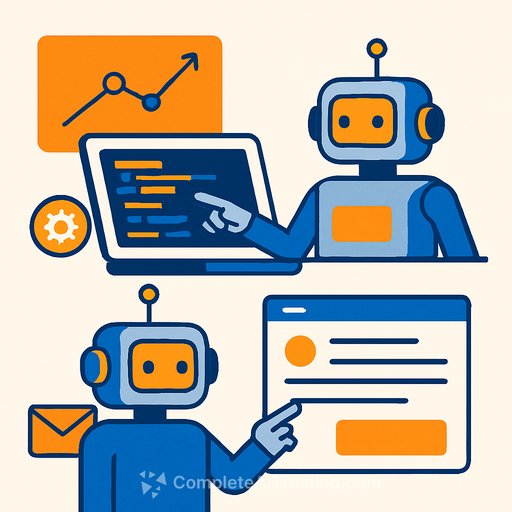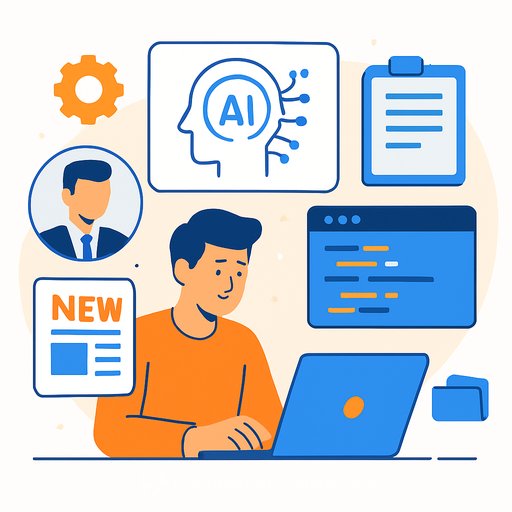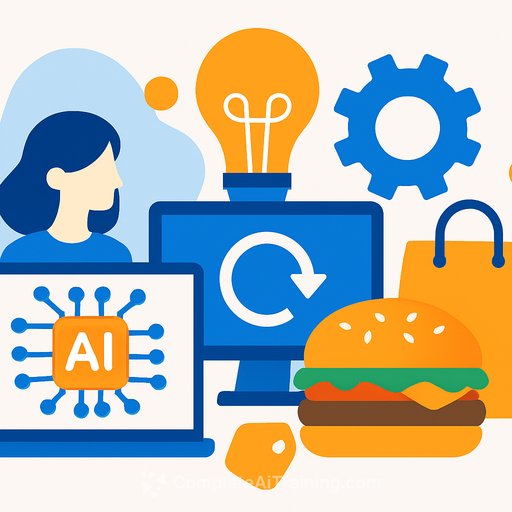Why Your AI Assistant Writes Emails Like It's 2024 - But Codes Like It's 2030
AI does not advance evenly across tasks. Coding assistants keep leaping ahead, yet your email-writing bot feels stuck. The difference isn't model size. It's measurement.
Where products can grade themselves at scale, progress compounds. Where they can't, progress drips.
The measurement moat: why code moves faster
Software has something most tasks lack: billions of automated tests. Unit, integration, security, performance-clear pass-fail signals that run nonstop. That makes it ideal for reinforcement learning loops that iterate without humans in the middle.
Email tone, sales outreach, and general writing don't have reliable, objective oracles. Feedback is subjective, noisy, and expensive. As teams lean into reinforcement learning, this "reinforcement gap" favors testable workflows and stalls everything else.
What "testable" really means for product teams
- There's a clear spec you can encode as checks, assertions, or constraints.
- You can create large synthetic task sets that mirror user intent and edge cases.
- You can compute a repeatable pass-fail or graded score without manual review.
- Iterations are cheap enough to run thousands to millions of times.
- The signal correlates with real user value, not just proxy gaming.
Software development checks every box. That's why code generation, debugging, and formal problem solving surge ahead, while writing skills inch forward.
Gray areas you can make testable
Plenty of workflows sit between "fully testable" and "purely subjective." Finance, reporting, and actuarial work lack ready-made test suites, but you can build them. Outcomes depend on whether you turn process logic into measurable criteria.
- Create golden datasets with strict schemas and compute exactness, coverage, and constraint adherence.
- Use structured rubrics with multi-rater adjudication to reduce bias and stabilize scores.
- Adopt evaluator models, but audit them with spot checks, adversarial tests, and drift monitoring.
- Break complex tasks into smaller units with objective checks, then recombine.
- Run red-team suites for failure modes: hallucination, policy bypass, privacy leaks, and cost blowouts.
Why video just got better
Until recently, AI video looked impressive but fragile. Then models like "Sora 2" showed stronger object permanence, consistent faces, and physics that hold. That's what happens when you turn vague aesthetics into measurable constraints and train against them.
Photorealism is not the same as coherence. The latter needs enforceable checks-frame-to-frame identity, motion continuity, light consistency, and cause-effect adherence. When those get scored, quality climbs.
OpenAI's Sora page and the broader literature on reinforcement learning from human feedback give useful context on why measurable loops matter.
Product playbook: from demo to dependable
- Define outcomes: what will the user trust the system to do every time?
- Write the spec, then turn it into checks: constraints, schemas, invariants, and thresholds.
- Assemble datasets: real logs, synthetic generators, fuzzers, and adversarial cases.
- Build the evaluation loop: batch tests on every model/data/prompt change with clear pass gates.
- Separate offline training metrics from online user metrics; use holdouts to detect overfitting.
- Ship narrow first: pick the slice with the strongest tests and expand outward.
- Instrument everything: accuracy, compliance, latency, cost per task, and escalation rate.
- Close the loop: A/B experiments, targeted rater reviews, and issue taxonomies feeding new tests.
Org design that supports this
- Evaluation engineers: own test design, data generation, and metric validity.
- ML + QA partnership: treat model behavior like software quality with CI for prompts, data, and weights.
- PMs who think in specs and gates, not demos; every user story maps to checks.
- Data ops to build, refresh, and de-bias goldens; policy and security in the loop from day one.
What this means for roadmaps
While reinforcement learning remains central to shipping AI, the reinforcement gap will widen. Workflows that can be graded at scale get automated sooner. Workflows that resist measurement lag behind.
Expect more surprises where teams invent good tests-video was one. Healthcare, compliance, and specialized operations could be next, depending on how quickly measurement frameworks mature.
Quick checklist
- Where is the pass-fail line? If you can't write it down, you can't scale it.
- Do your offline metrics predict online wins? Prove the correlation.
- What's your smallest high-confidence slice to ship first?
- How will you catch regressions across prompts, data, and model updates?
- What failure modes can cause real harm? Add tests and escalation paths now.
Level up your team's capability
If your roadmap depends on stronger testing muscle, formalize it. Training your PMs, engineers, and analysts on evaluation-first development pays off fast.
Certification for AI-assisted coding can help teams build the habits and test suites that move products from demo to dependable.
Your membership also unlocks:






